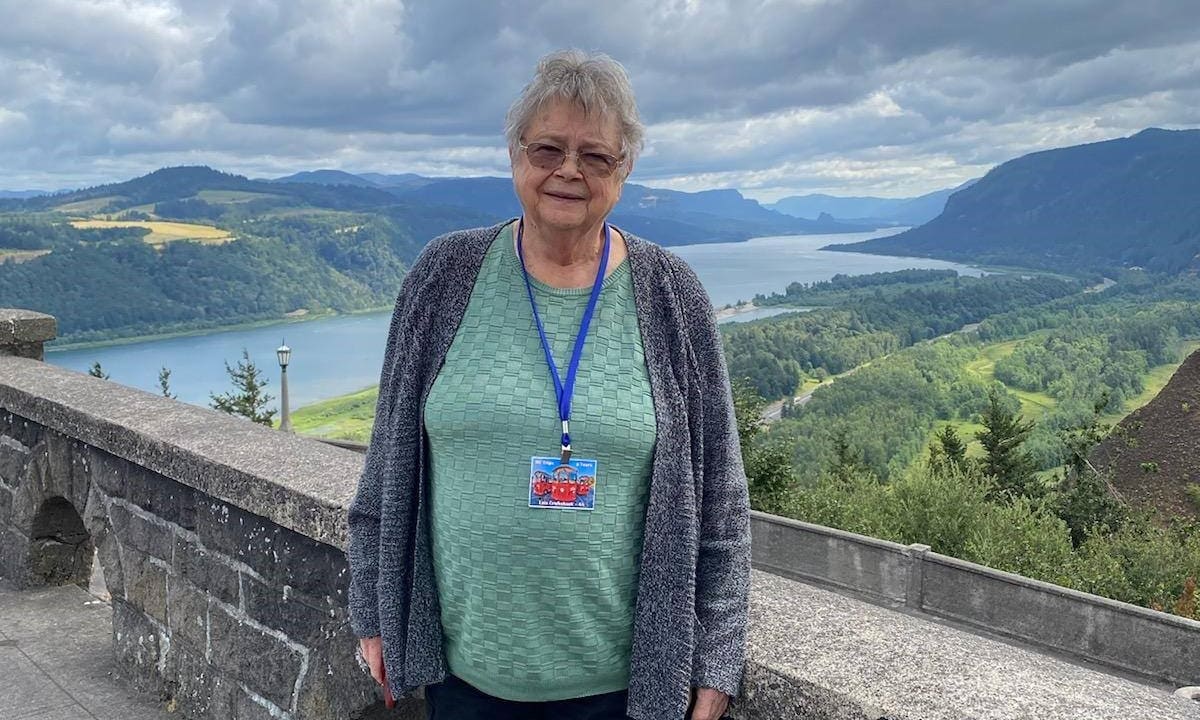Augmented reality technology enhances Yakima woman’s knee replacement surgery

Lois Cruikshank is an active volunteer who enjoys gardening and traveling. But the arthritis in the 84-year-old’s knees was starting to take its toll on her ability to do the activities she enjoys.
“I love to travel; I’m always on the go,” she says. “But my knees started hurting while walking, and at night I’d roll over and my knees would be in pain.”
Both of Cruikshank’s knees are bone on bone, meaning she has advanced osteoarthritis and not much, if any, cartilage left to provide cushion for her joints.
“It got to the point where Biofreeze and I were best friends,” she explains. “When I wasn’t able to do quite as much because of the pain, I decided to see if it was time for surgery.”
Cruikshank turned to orthopedic surgeon Nicholas Kennedy, MD, with MultiCare Orthopedics Northwest to discuss knee replacement surgery. She was worried her age might interfere with having surgery, but Dr. Kennedy assured her it wasn’t an issue.
“I lucked out that I was able to get in with Dr. Kennedy. I heard he did his residency at Mayo Clinic, so I knew he would be up on the newest procedures,” she says.
“ARVIS allows me to further increase my accuracy when performing surgery and customize my surgical plans. This truly enables me to individualize each patient’s care.”
She was right. Dr. Kennedy says he’s always looking for ways to improve patient outcomes, whether that be with new techniques or advancements in technology.
For knee replacement surgeries, he uses an augmented reality technology called ARVIS®. ARVIS (augmented reality visualization and information system) is a wearable device that helps surgeons place and align implants during surgery.
“ARVIS allows me to further increase my accuracy when performing surgery and customize my surgical plans,” Dr. Kennedy says. “This truly enables me to individualize each patient’s care.”
Before surgery, Dr. Kennedy places landmarks on the patient’s knee, which serve as a map of their unique anatomy.
“During surgery, real-time data are delivered to me through a headset,” he explains. “This helps me visualize the best placement and fit of the implant.”
This precision translates to less pain after the procedure and shorter recovery times.
“My surgery was at 8am, and I was home by 1pm,” says Cruikshank. “Everything went really well.”
It’s been six months since surgery and she feels great. She’s gardening and taking trips with her local senior center.
“I have no pain whatsoever, and I walk normally,” she says. “Since surgery, I’ve gone with the group to Leavenworth to see the Sound of Music and took a trolley tour of the waterfalls at the Columbia Gorge.”
What's next
- Schedule an appointment with your doctor or other health care provider
- Joint replacement surgery at MultiCare
- What to know about knee replacement surgery



